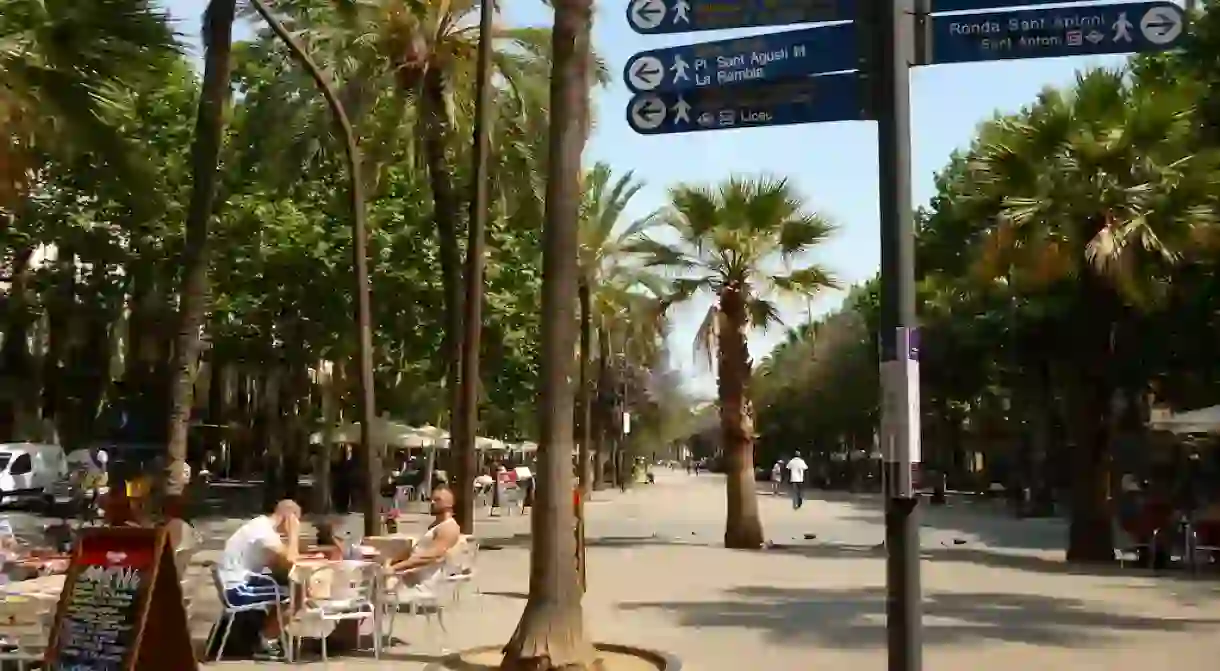Discover Barcelona’s El Raval Neighborhood

For a long time in recent history El Raval was considered a no-go area for anyone but the hardiest of local residents, infamous for its culture of crime and drugs. Fast-forward a few years and today the area is a vibrant melting-pot in the grips of a rapid process of gentrification and home to a diverse international community. Read on to discover our local’s guide to one of Barcelona’s most controversial neighborhoods.
A bit of background history
Located to the south of La Rambla, before the neighborhood of Poble Sec and the Avenida Parallel, El Raval’s name derives from the Arabic word ‘rabad’, meaning ‘suburb’. The reason being that during the Middle Ages when Barcelona was a walled city, El Raval was located on the outside of the walls and did not initially form part of the city proper. This is also why the famous Boqueria market is located there, just off La Rambla, as this enabled traders to avoid the tax on merchandise imported into the city.
Eventually El Raval was incorporated into the walled city but continued to exist on the fringe of the local community. The area developed a reputation for criminality, prostitution and all other manner of behavior frowned upon at the time. For much of the early 20th century El Raval was known informally as the ‘Barrio Chino’ – or ‘Chinese Neighborhood’ – owing to the growing community of Chinese and Asian residents who settled there. In fact, the area has long been a culturally diverse neighborhood, with many international communities as well as a large Roma community living there.

However, in the last 15 years or so, El Raval has seen tremendous change to its social fabric owing to efforts made by the local council to reduce crime in the area, and the fast-paced gentrification process which ensued. The University of Barcelona opened a new site there and the city’s contemporary art museum, the MACBA, has also become one of El Raval’s most iconic landmarks. Today the local community remains diverse, with large Sikh and Muslim communities as well as a lively scene of artists and alternative culture.
What to see and do
El Raval is a fascinating place to explore as it offers a vision of a very multi-cultural Barcelona, home to Sikh temples, mosques and churches alongside lively nightlife and an important artistic community. Aside from being one of the most cutting-edge contemporary art museums in Europe, the MACBA is also one of the most popular skating grounds for the city’s many skateboarders. Just around the corner is a similarly modern institution, the CCCB – Centre for Contemporary Culture of Barcelona – which brings together artists and influencers from the world of art, philosophy, literature and more, while the Filmoteca de Catalunya is home to one of the largest archives of Catalan film and has a rich program of films, old and new, Spanish and international.

There are also a number of important historic landmarks such as the Palau Güell, designed by famous Catalan architect Antoni Gaudí for his patron, the entrepreneur Eusebi Güell (whose name was also given to Barcelona’s iconic Park Güell). The Sant Pau del Camp Monastery is a stunning Romanesque edifice which boasts large Moorish arches and is well worth a visit. And of course, a visit to El Raval wouldn’t be complete without a glimpse of the Boqueria market, Barcelona’s most famous fresh food market.
Where to eat
The beauty of El Raval being such a diverse neighborhood is the variety of places to eat, drink and be merry. At the top end, the area is home to one of the most well-regarded traditional restaurants in the city: Can Cañete. Sample authentic Catalan cuisine at its finest in a sophisticated setting with an extensive wine list. While Dos Palillos is a Michelin-starred, Asian-inspired restaurant – run by a former El Bullí disciple – which has a distinctly laid back feel.

The Rambla del Raval is home to a large number of tapas restaurants and kebab houses which have upped their game in recent years. Just round the corner, though, the Plaça Salvador Seguí is a treasure trove of hidden-gem eateries and hip hangouts: La Robadora serves creative tapas in a stylish modern setting; El Magraner Boig is one of the best Greek restaurants in town and has a cool, urban feel to it; while La Monroe is a lively tapas bar open late on weekends.
For a night cap try Bar 68, a stylish modern cocktail bar located just round the corner from the square. Or for something a little stronger why not nip into Bar Marsella – Barcelona’s infamous absinthe bar which is rumoured to have attarcted the likes of Picasso and Hemingway.
Where to stay
There are a number of hotels in El Raval and it’s a great place from which to explore the city. The Hotel Barceló Raval, located on the Rambla del Raval, stands out for its modern design and boasts a large, 360-degree rooftop terrace. Just a minute from La Rambla and the MACBA, Casa Camper is a slick, stylish hotel run by the eponymous shoe company and boasts a speakeasy cocktail bar in the basement.














